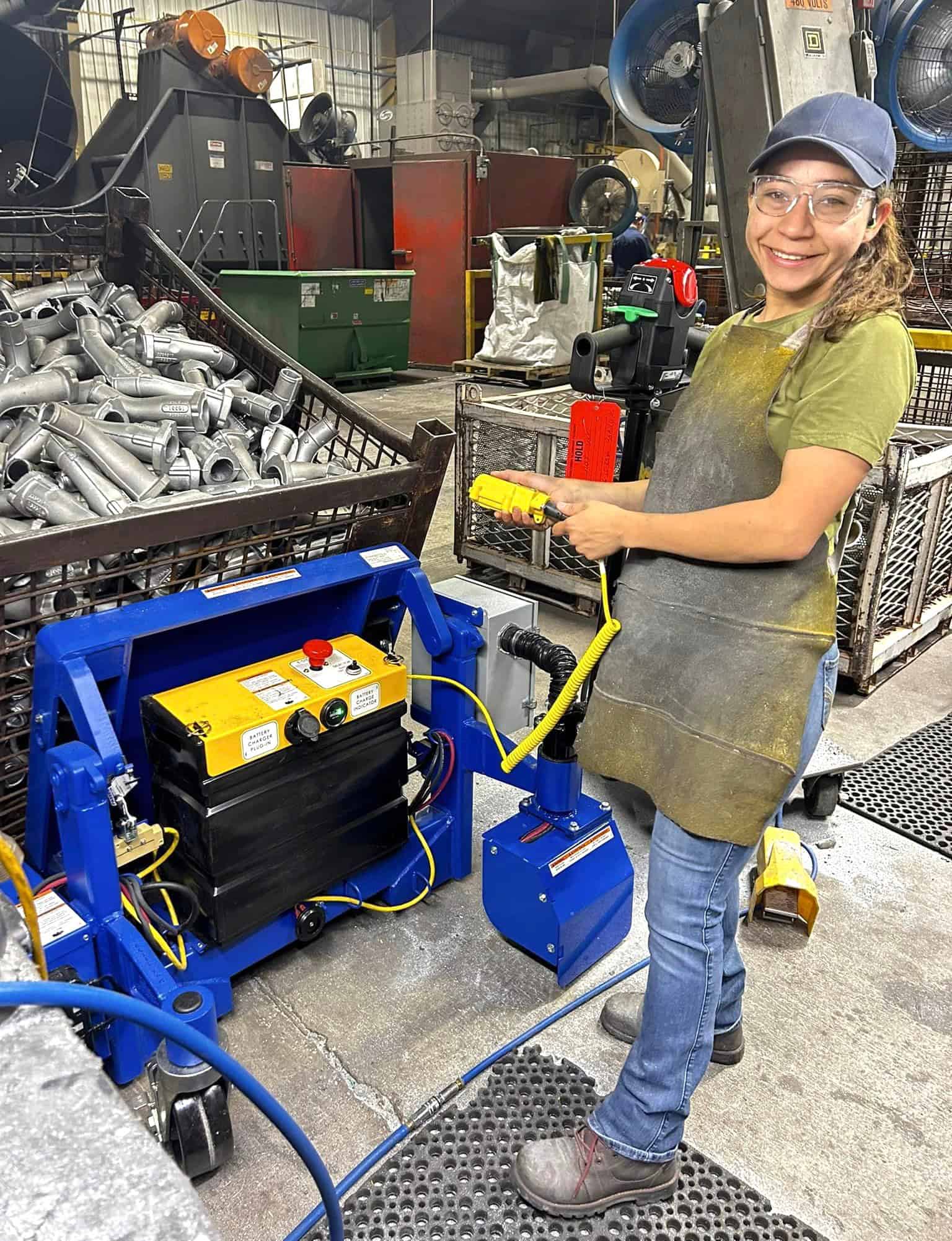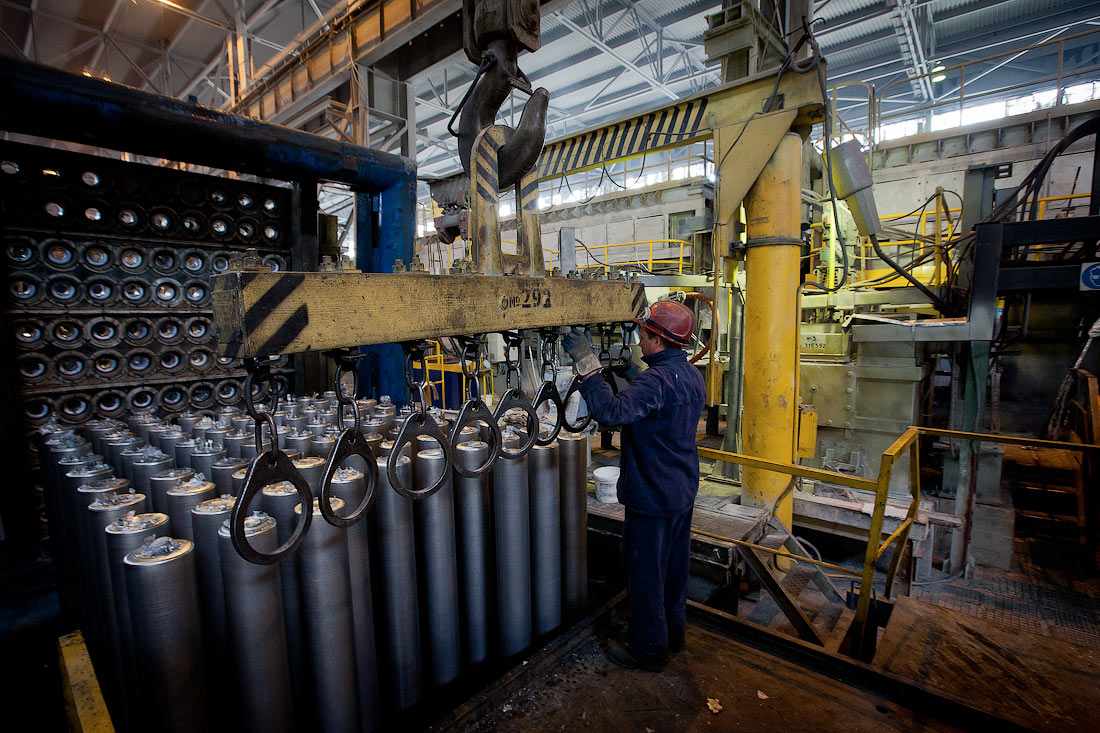How Aluminum Foundry reduces carbon footprints through sustainable practices
Understanding the Importance of Aluminum Foundry in the Aerospace and Automotive Industries
Aluminum foundries are essential to the aerospace and auto industries. They provide crucial lightweight parts that add to general effectiveness and efficiency. The one-of-a-kind buildings of aluminum deal distinctive advantages in manufacturing. As developments in technology and lasting methods emerge, the function of these foundries is evolving. Understanding these elements raises vital questions concerning the future of transportation and innovation. What implications do these growths hold for the markets at huge?
The Role of Aluminum Foundries in Production Lightweight Parts
Aluminum foundries play an essential duty in the aerospace and vehicle markets by producing lightweight elements that improve performance and gas efficiency. The demand for lighter products has actually risen as producers look for to decrease general car weight, bring about improved fuel economy and reduced emissions. Aluminum's distinct homes, consisting of high strength-to-weight proportion and corrosion resistance, make it a best option for different applications.
Elements such as engine blocks, transmission housings, and structural aspects take advantage of aluminum's malleability and ease of spreading, supplying the necessary toughness while lessening weight. In addition, aluminum's recyclability lines up with lasting production techniques, better driving its fostering in these sectors. Foundries employ accurate strategies to ensure suitable product buildings, facilitating technologies in layout and modern technology. Eventually, aluminum foundries are important in meeting the advancing needs of aerospace and vehicle markets, adding to improvements in security, performance, and environmental duty.
Advanced Casting Techniques Made Use Of in Aerospace and Automotive Applications
In the aerospace and auto fields, progressed spreading methods have become essential for boosting efficiency and effectiveness. Accuracy casting approaches, together with lightweight alloy advancements, enable the production of parts that meet stringent industry criteria. Furthermore, the combination of additive production additionally revolutionizes style possibilities, enabling for better customization and complexity in components.
Precision Casting Approaches
While industries such as aerospace and vehicle progressively need high-performance parts, precision spreading techniques have actually emerged as important techniques to satisfy these requirements. These approaches, including financial investment casting and pass away casting, deal extraordinary dimensional precision and surface coating, important for elements based on rigorous functional conditions - Aluminum Foundry. Financial investment casting enables detailed styles and complicated geometries, allowing the manufacturing of light-weight yet durable parts. Pass away spreading, on the other hand, ensures high quantity manufacturing with constant top quality and minimized lead times. Both approaches help with the effective use products, minimizing waste and boosting sustainability in manufacturing processes. As the need for cutting-edge options continues to grow, precision casting approaches play an essential function ahead of time the abilities of aluminum foundries within these crucial markets
Lightweight Alloy Innovations
As the aerospace and auto markets go for enhanced performance and effectiveness, advancements in lightweight alloys have come to be increasingly significant. These alloys, that include advanced aluminum-lithium and magnesium-based structures, offer premium strength-to-weight ratios, enabling makers to create elements that are both durable and light-weight. The fostering of these materials not only enhances fuel efficiency yet likewise minimizes greenhouse gas discharges, lining up with worldwide sustainability goals. Advanced casting strategies, such as die spreading and investment casting, have actually been enhanced to collaborate with these lightweight alloys, allowing for intricate styles and complicated geometries. This adaptability enhances the capability and performance of parts made use of in critical applications, from airplane frameworks to vehicle structures, strengthening the function of aluminum foundries in driving industry innovation.
Additive Manufacturing Combination
Additive production has arised as a transformative pressure in the aerospace and auto industries, flawlessly incorporating with sophisticated spreading strategies to boost manufacturing capabilities. This assimilation permits the creation of complex geometries that traditional techniques battle to accomplish, considerably enhancing layout flexibility. By combining additive procedures with aluminum casting, producers can maximize weight decrease while maintaining architectural stability. This harmony likewise cultivates fast prototyping, allowing quicker models and minimizing time-to-market for new components. In enhancement, the use of additive production can lower product waste, straightening with sustainability objectives in both industries. Therefore, the collaboration in between these innovative techniques is leading the method for cutting-edge solutions and performances that redefine production in aerospace and auto applications.
Advantages of Aluminum as a Material in High-Performance Components
Aluminum uses substantial benefits in high-performance components as a result of its lightweight structure, which adds to improved fuel effectiveness and improved performance in both aerospace and vehicle applications. Additionally, its rust resistance residential or commercial properties assure longevity and toughness, making it a perfect selection for components exposed to harsh environments - Aluminum Foundry. These advantages position aluminum as a leading material in the manufacturing of advanced high-performance parts
Light-weight Structure Benefits
When taking into consideration materials for high-performance components in aerospace and vehicle industries, the lightweight structure of aluminum uses substantial benefits. Its low density permits the production of parts that lower total automobile weight, improving fuel performance and efficiency. This decrease in weight adds to reduce discharges and enhanced operational expenses, making aluminum an eco-friendly choice. Additionally, lighter structures make it possible for far better handling and velocity, crucial variables in affordable auto racing and advanced aircraft layout. The ability to design intricate forms without endangering stamina additionally improves aluminum's appeal, allowing suppliers to introduce while satisfying strict safety criteria. Generally, the lightweight nature of aluminum supports the sector's change towards more reliable and high-performing cars.
Rust Resistance Characteristics
The remarkable rust resistance of aluminum makes it a perfect choice for high-performance parts in both aerospace and automobile industries. This residential property is crucial, as elements are typically subjected to rough ecological problems, including moisture, salt, and severe temperature levels. Aluminum's natural oxide layer acts as a safety barrier, preventing the underlying steel from corroding, consequently expanding the life expectancy of crucial components. On top of that, aluminum alloys can be customized to improve rust resistance, permitting particular applications popular atmospheres. This strength reduces upkeep prices and improves safety and security, making aluminum a preferred product for parts such as engine parts, frameworks, and architectural elements. Eventually, the deterioration resistance of aluminum contributes substantially to the overall dependability and efficiency of vehicles and aircraft.
Advancements Driven by Aluminum Foundries
As industries increasingly focus on light-weight products for enhanced effectiveness, technologies driven by aluminum foundries have become a crucial force in both aerospace and automobile markets. These foundries go to the center of developing sophisticated aluminum alloys and casting site web methods, which boost mechanical buildings and decrease general weight. Improved die-casting approaches, such as high-pressure die spreading and press spreading, make it possible for the production of elaborate shapes with remarkable surface area coatings, addressing complex engineering demands.
Additionally, the integration of automation and robotics in aluminum foundries has streamlined production procedures, increasing performance and reducing lead times. The adoption of additive manufacturing methods, including 3D printing with aluminum materials, has likewise opened new avenues for quick prototyping and customization. These innovations not just add to the performance and toughness of elements but also boost the layout versatility for producers, enabling more cutting-edge and effective car designs in both aerospace and automotive applications.
Ecological Benefits of Using Aluminum in Production
Although several products are utilized in production, aluminum attracts attention for its considerable environmental benefits, specifically in the aerospace and vehicle markets. Its light-weight nature adds to enhanced fuel effectiveness in lorries and aircraft, leading to decreased greenhouse gas emissions. In addition, aluminum is extremely recyclable; about 75% of all aluminum ever created is still being used today. This recyclability lessens energy consumption, as reusing aluminum needs just 5% of the energy needed for primary production.
Aluminum's lengthy life-span and resistance to rust minimize the demand for regular replacements, thereby decreasing waste generation. Using aluminum in producing not just sustains sustainable practices but additionally lines up with the expanding international focus on reducing carbon footprints. As sectors venture for greener remedies, integrating aluminum is a critical choice that fosters ecological duty while satisfying the strenuous needs of aerospace and automotive applications.

Quality Control and Testing in Aluminum Foundries
Efficient quality assurance and rigorous screening are necessary in aluminum foundries to ensure the manufacturing of high-performance parts for aerospace and automotive applications. These procedures start with the cautious selection of raw materials, ensuring they fulfill certain chemical and physical homes. Foundries execute rigorous surveillance systems throughout the production procedure, including temperature level control and mold and mildew integrity checks, to avoid issues.
Examining methods, such as spectrometry and mechanical testing, validate that the aluminum alloys have the required stamina, ductility, and tiredness resistance. Non-destructive screening strategies, like ultrasonic and X-ray evaluations, are utilized to identify interior imperfections without damaging the components.

Future Fads in Aluminum Foundry Technology for Transportation Industries
Significantly, advancements in aluminum foundry innovation are forming the future of the transportation industries, especially in aerospace and auto sectors. Developments in automated spreading procedures are enhancing efficiency and precision, minimizing manufacturing times while decreasing waste. Techniques such as 3D printing and additive manufacturing are acquiring grip, permitting the creation of complex geometries that enhance weight and efficiency.
In addition, the integration of clever innovations and information analytics is facilitating real-time monitoring of factory operations, enhancing quality assurance and consistency. As sustainability ends up being a concern, recycling initiatives are anticipated to expand, enabling the reuse of aluminum scrap, which is both cost-efficient and eco pleasant.
Finally, the advancement of sophisticated alloys will allow manufacturers to generate lighter, more powerful components, straight adding to enhanced fuel effectiveness in automobiles. In general, these trends are readied to reinvent aluminum foundry techniques, equaling the advancing requirements of the transportation sectors.
Often Asked Questions
Just How Do Aluminum Foundries Ensure Security for Employees?
Aluminum foundries prioritize employee security by implementing strenuous training programs, preserving correct ventilation systems, making use of personal safety devices, performing routine safety and security audits, and sticking to sector guidelines, creating a safe environment for all staff members.
What Are the Common Flaws in Aluminum Castings?
Common flaws in aluminum spreadings consist of porosity, contraction, inclusions, and surface area imperfections. These issues can emerge from poor mold and mildew layout, insufficient putting techniques, or contamination, eventually influencing the quality and performance of the last item.
How Do Aluminum Foundries Take Care Of Recycling of Scrap Materials?
Aluminum foundries effectively take care of scrap material recycling by gathering, arranging, and melting down aluminum waste. This process decreases that site environmental influence, reduces production prices, and guarantees a lasting supply of raw materials for future spreading procedures.
What Accreditations Should Aluminum Foundries Have?
Aluminum foundries should possess qualifications such as ISO 9001 for quality administration, ISO 14001 for environmental monitoring, and specific aerospace or view website vehicle standards like AS9100 or IATF 16949 to ensure conformity and high quality in manufacturing procedures.
Exactly How Does Climate Effect Aluminum Casting Processes?
Climate substantially influences aluminum spreading processes by influencing temperature levels and humidity levels. High moisture can lead to moisture-related flaws, while severe temperature levels may change metal residential or commercial properties, inevitably affecting the high quality and consistency of the final actors items.